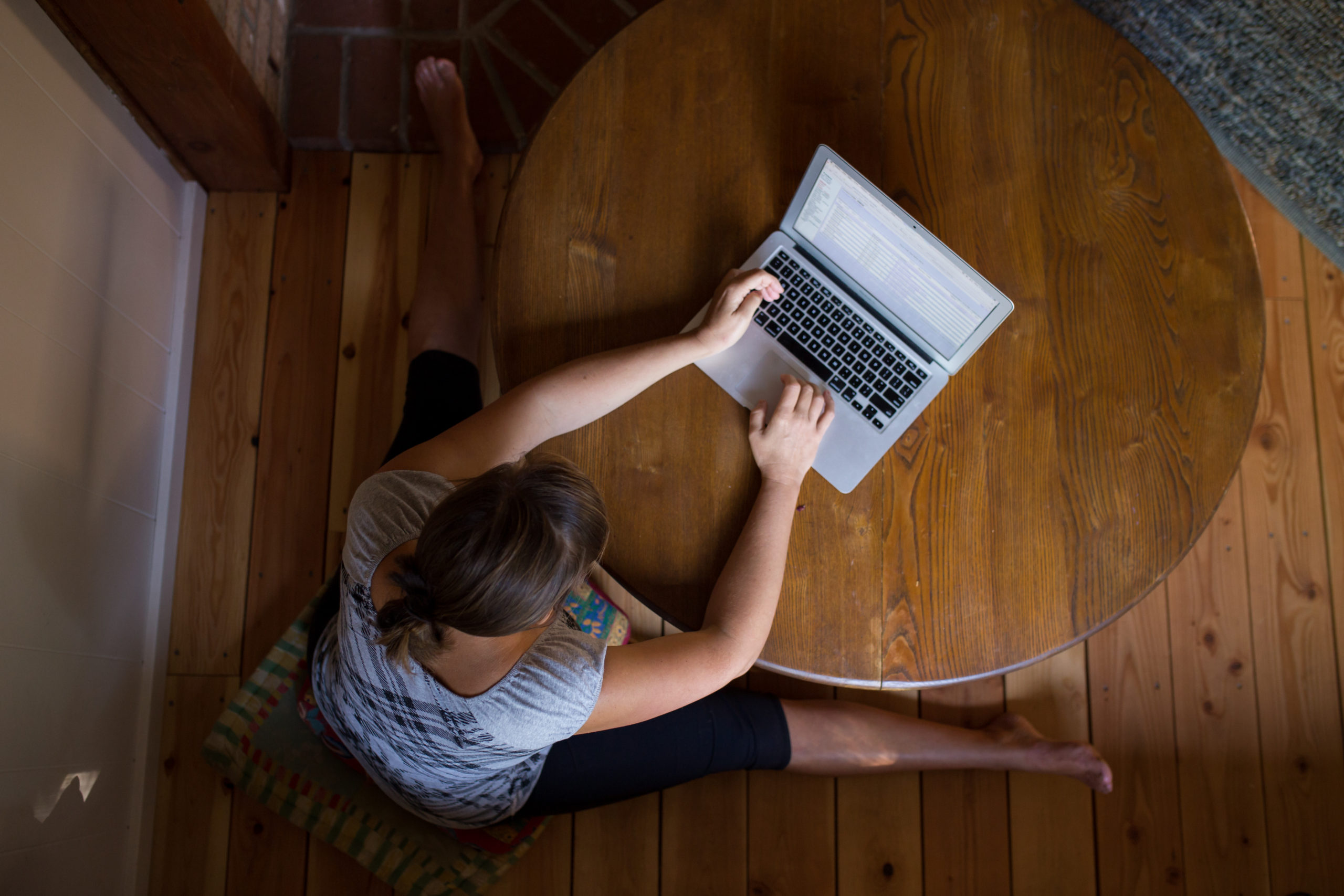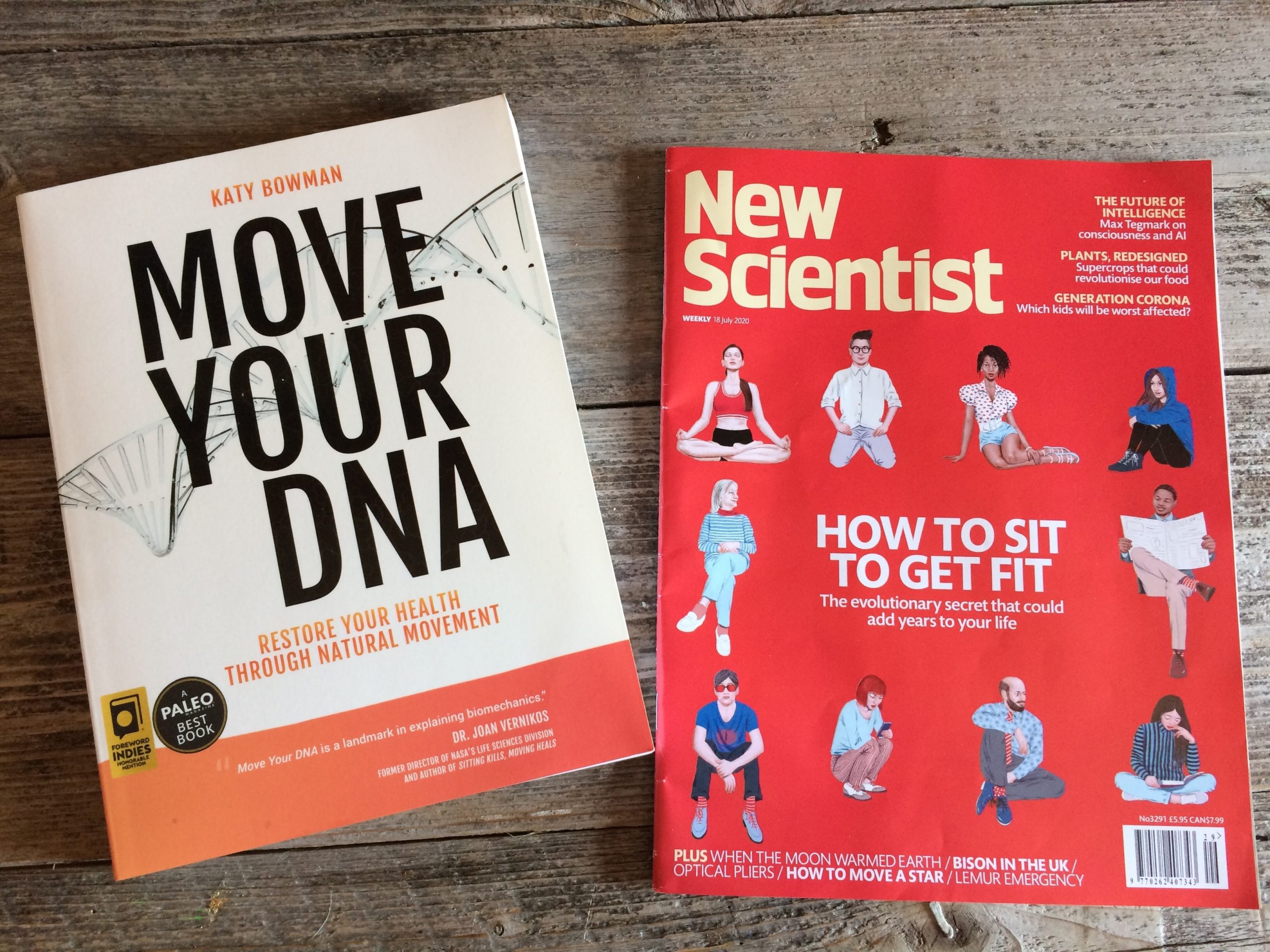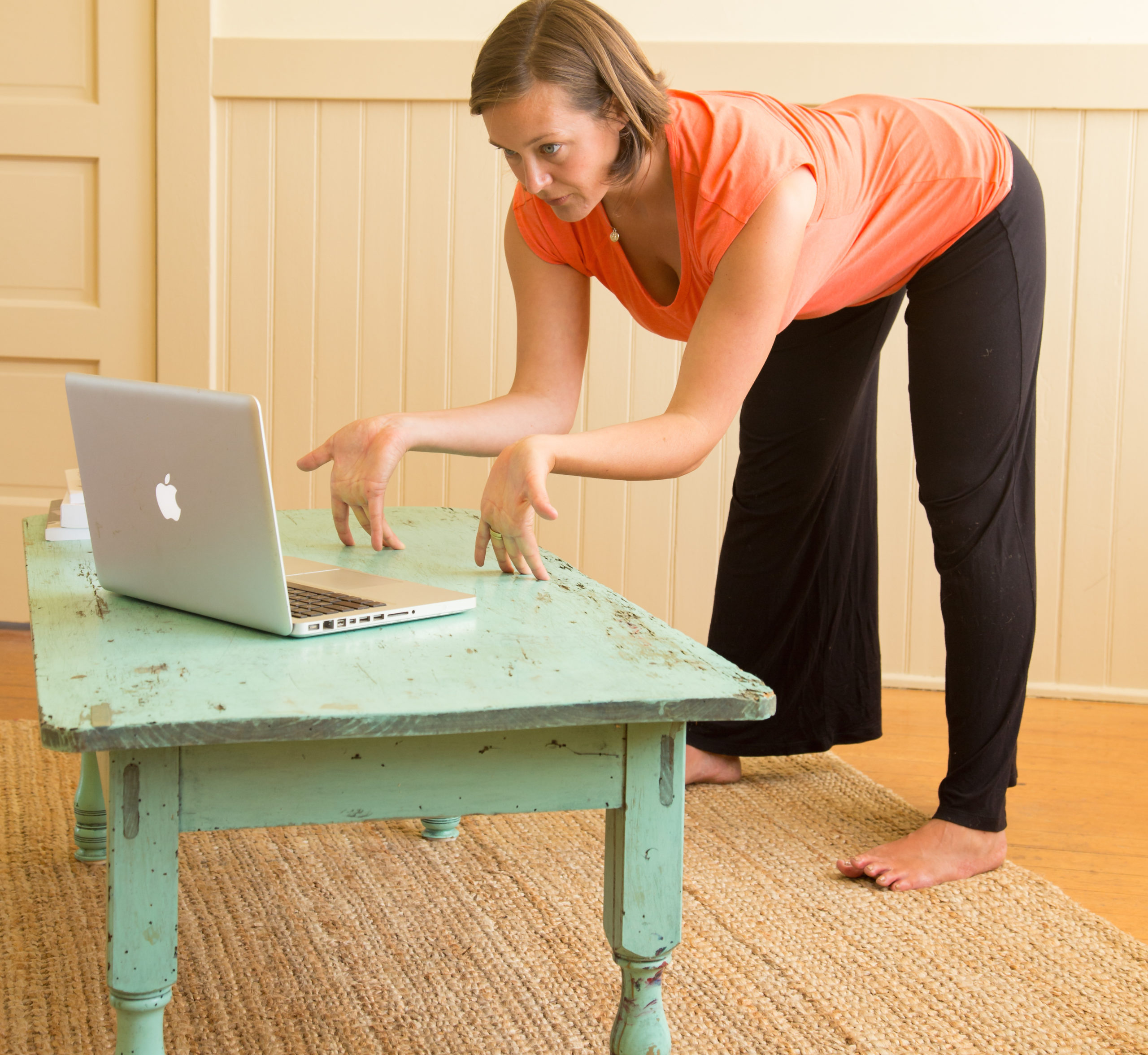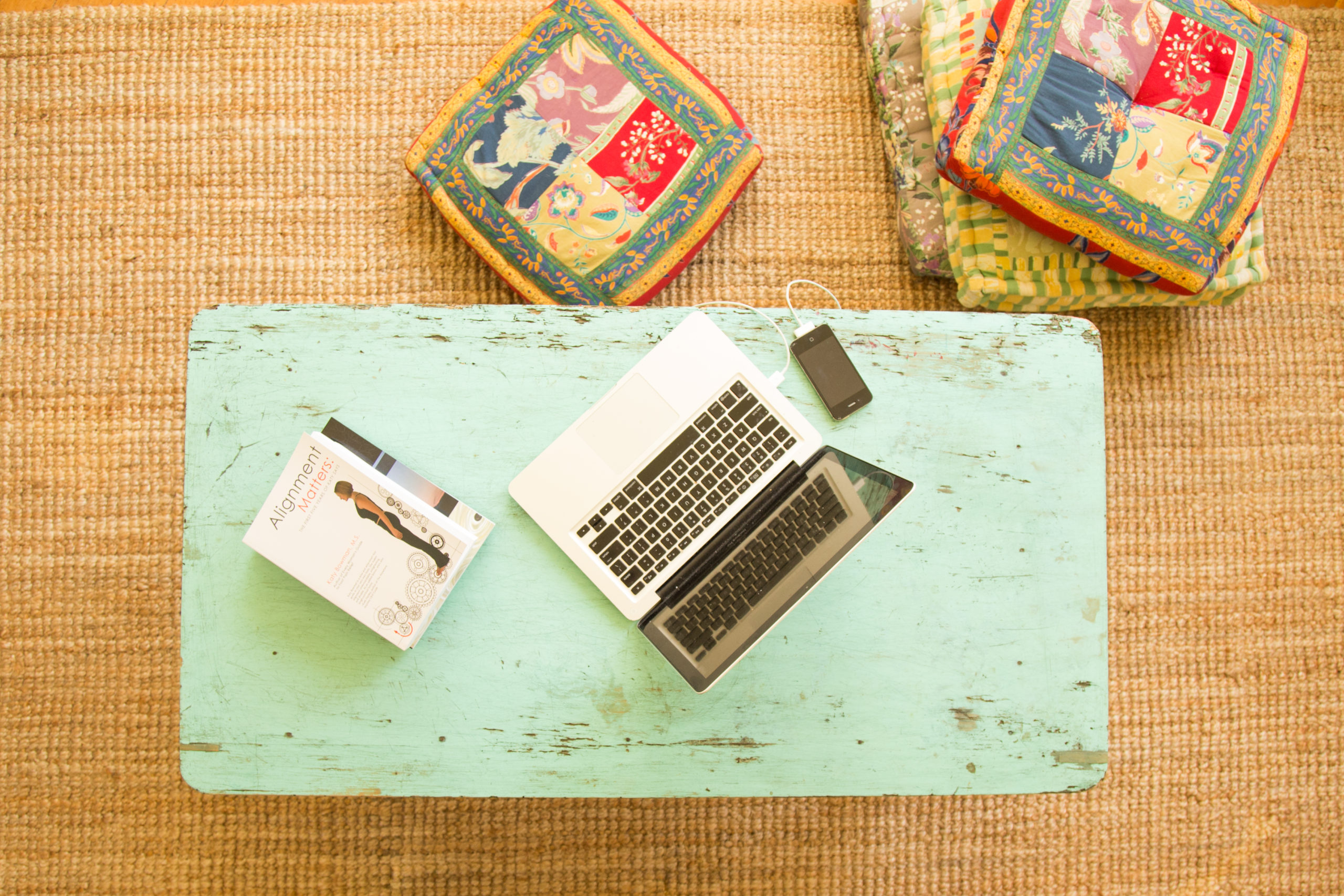In March 2020, at the beginning of our shelter-in-place orders, I wrote an article, “Keep Moving in Place,” that gave a broad overview of all the places movement could “fit” into a home. Close to six months later, many of us are finding ourselves moving less than we were a year ago. This is a problem, given that movement might be one of the most proactive preventive measures we can take when it comes to keeping our bodies and families well. This “Dynamic at Home” series includes a handful of articles, each diving more deeply into individual tips from my first article, providing more images, examples, and considerations. Find other articles in this series linked at the bottom of this page.
Okay, so you’ve got yourself a low desk or you’re opting out of the couch for the floor. NOW WHAT? You’ve got to start changing up what you’re doing once you’re down there. Just like minimal shoes are most effective when you’re actually walking in them, a more dynamic desk or leisure-time setup is most valuable when you’re moving while using it.
Start sitting well to move more
How do you move more while essentially just sitting there? You opt for a variety of active sitting positions that involve a multitude of body parts doing work to hold you upright while you’re doing your work.
I know it sounds like a lot of work, and yes, we could all use some lazy time now and then, but right now we’ve been seriously overdosing on lounging for decades. As in, we get out of bed and get to work lounging right away only to get home and start lounging again. Sure, our brains and fingers might be engaged, but our bodies? Not so much.
As someone who spends a lot of time reading and writing about movement, I long ago had to shatter the notion that I had to be still in order to produce my work. I’m sharing my solutions with you in this practical piece, but if you’re interested in the theory behind why it’s necessary to use a variety of positions each day, read Move Your DNA or this paper I wrote on the matter.
Simply put, varying up your body position allows you to spread more movement over more parts of your body, and when you vary your sitting positions on the floor, you’ve got all that extra getting up and down to do throughout the day. You use the large muscles of your body to carry you to and from the floor—something human muscles have always had to do until very recently. Are the seating arrangements you have facilitating or blocking you from moving more?
Dynamic sitting has been recently featured in both New Scientist magazine (“How changing the way you sit can add years to your life”) and on Blue Zones media (the “Okinawan Practice of Sitting On The Floor is Linked to Health and Longevity”). While sedentary behavior has become ubiquitous, don’t let the volume of the problem be confused with its complexity. Opting for a more dynamic way to take a seat is a simple solution to an issue most of us are currently facing: we are spending more and more time in place. By “in place,” I don’t just mean that we’re at home all the time; most of our daily interactions have been moved onto a six-to-eighteen-inch screen. We’re setting up a life where we’re required to have our eyes and ears glued to a device a very large portion of the time—and our butts and backs are starting to feel it.
I like to work in a variety of floor-based positions, but if you can’t get to the floor now, you can start by mixing up your body position while in a conventional chair. Start with this move.
JUST KIDDING. THAT WAS A JOKE.
Try these five ways to sit differently in a chair:
- Sit forward (toward the front edge of the seat where you can't recline against the back)
- Crossing one ankle over the opposite knee (try both sides to see how they compare)
- Reverse your chair and straddle it (shoot for an elevated "v-sit")
- Cross-legged
- Bring your feet up to the chair seat (light weight squat)
In our chair-dwelling culture, most of our bodies no longer move enough at the ankles, knees, hips, and spine to accommodate a variety of floor-sitting positions. These parts have one or two settings for “chair,” and anything outside of how our joints bend to meet the chair is not available. Good news, though—we can restore these motions with a step-wise, supportive practice.
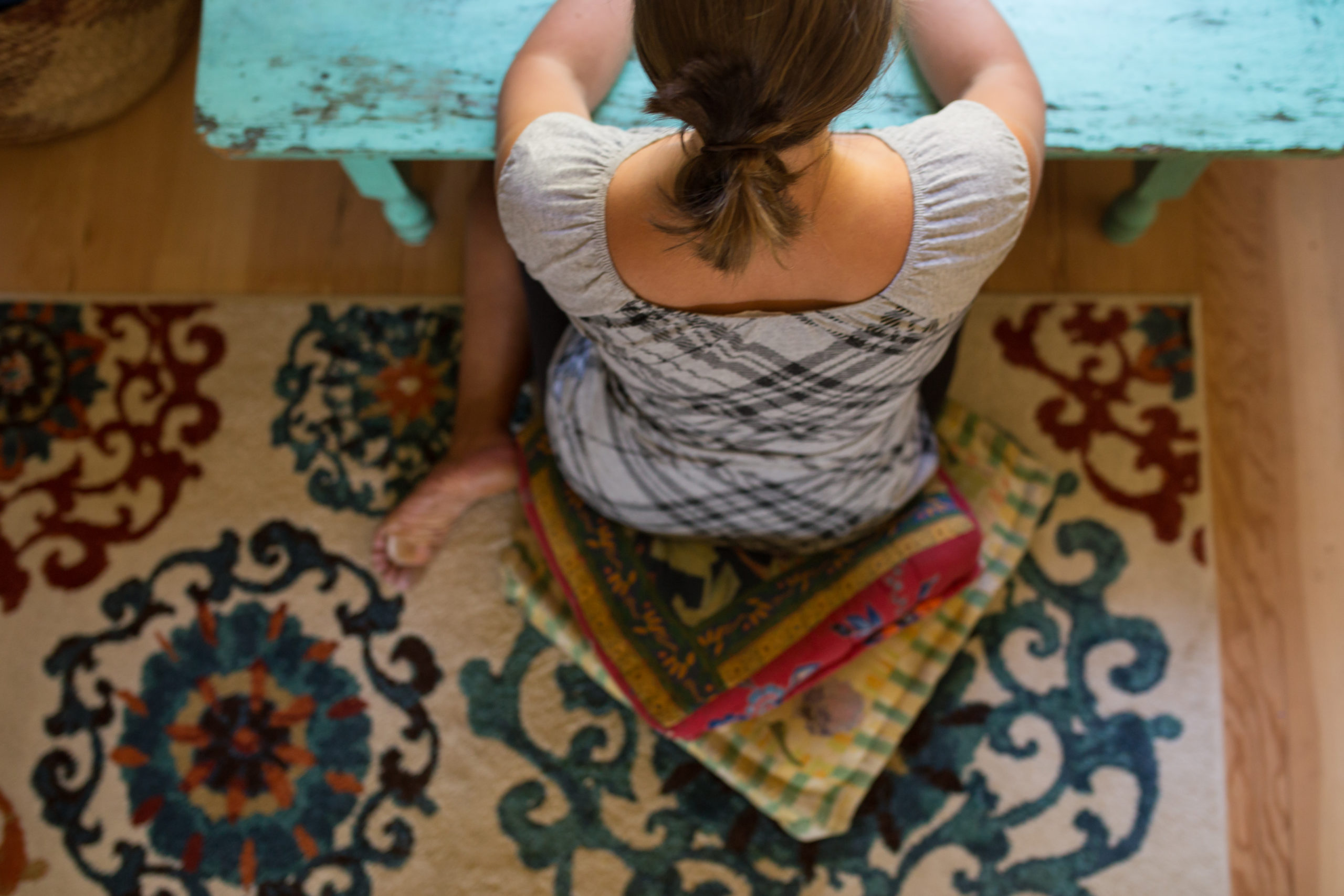
Here are five ways to floor sit you can try:
- Cross-legged (sit up on a folded blanket or pillow if you need to, and add a pillow to support any stiff knees if needed)
- Legs to the side (try it on both sides to see how they compare)
- V-sit
- Kneeling
- Squat (supported by bolstering the heels or by having a wall or couch behind you)
If these are accessible, great, but if you'd like a little warm up to make these sitting positions more possible over time, here’s a fifteen-minute “prepare yourself to sit well” exercise routine from our Virtual Studio that will take you through movements to increase the mobility of your toes, knees, hips, and lower back over time.
Adjust your environment for more dynamic sitting
I’m known for my relatively chair-free home. I made these changes for the same kind of reasons people get rid of the junk food in their house when they want to eat better. I move more and in different ways when the standard chair isn’t available. I want to sit down and lounge like everyone else, but my environment forces me to come up with an alternative.
That all being said, you don’t have to get rid of your furniture! Start by shuffling some items around. Start with where you take a seat most often. If there’s a place in your living room you migrate to each night, modify your environment by putting a low/backless ottoman or a kitchen chair (or something equally less cozy) in its place.
Something you already have can get you using your body in a new way—sitting differently doesn’t require any spending.
If you want to move onto the floor more often, stack some pillows or cushions just in front of “your spot” on the couch to remind you that you wanted to move more by sitting on the floor instead.
Hanging one of our “Think Outside the Chair” posters, showing a bunch of chair-free postures, next to your home office or school desk can remind you of all the ways you can mix up your sit—try a few.
If you're new to floor sitting and a dynamic home setup, read why we went furniture free and check out our furniture-free “gear guide.” Read more of our Dynamic at Home series: “Hanging and Reaching Spaces” and “Dynamic Work and School Spaces.” For more on the ideas behind this series, read (or listen to) Move Your DNA.


